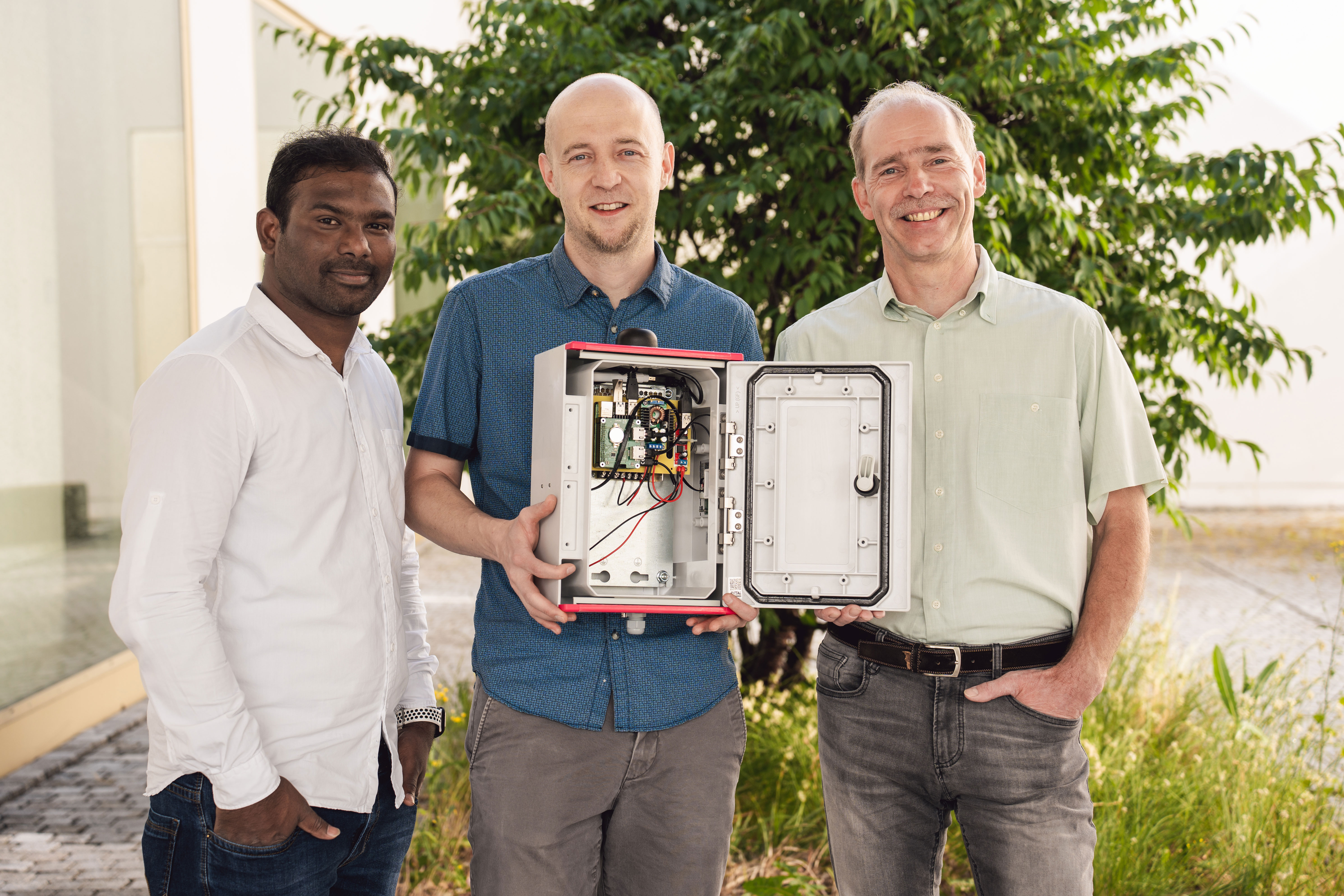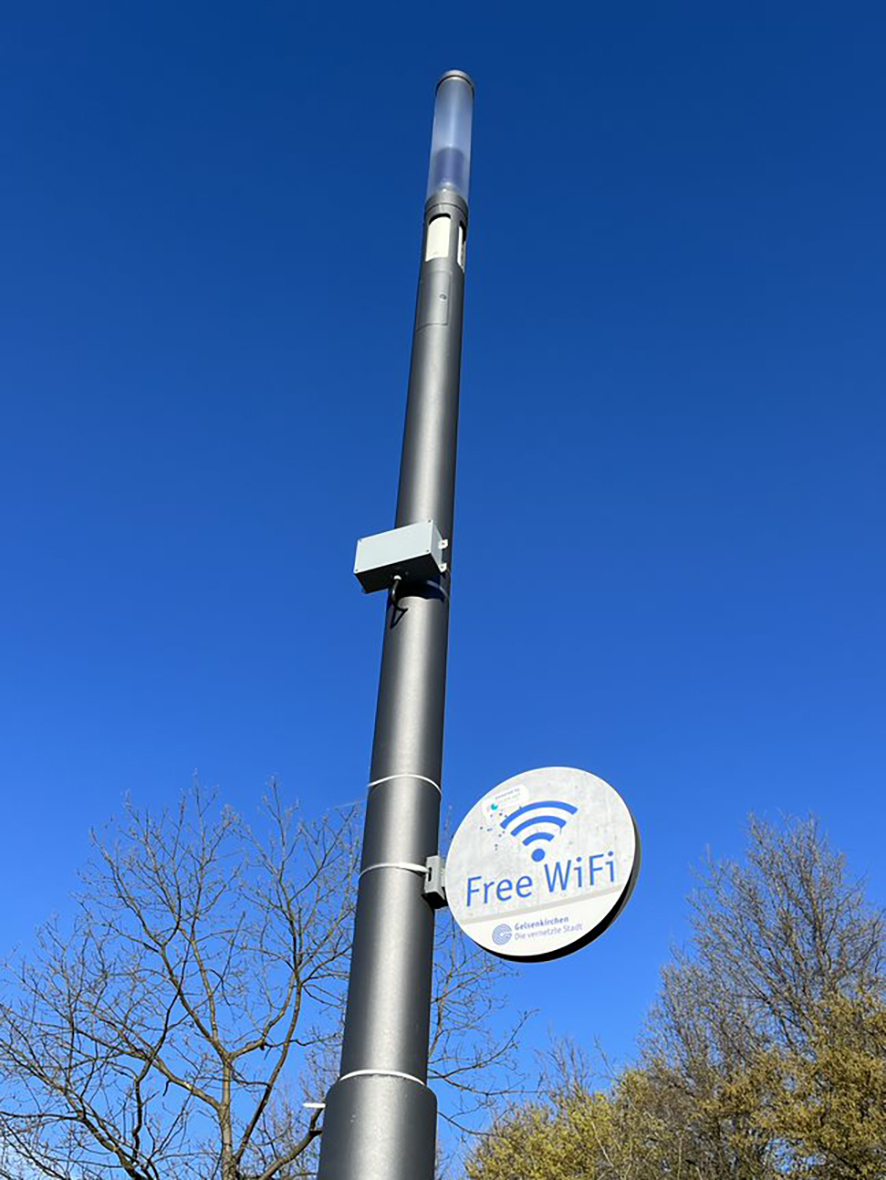Ilmenau
Fraunhofer IDMT and IMMS analyze noise pollution around the VELTINS Arena in Gelsenkirchen
Since April of this year, five noise sensors have been installed in a test area of the city of Gelsenkirchen in close vicinity of the VELTINS Arena. The rather inconspicuous boxes embody bundled research expertise from Ilmenau and could soon help to avoid traffic jams and noise pollution around the event area. In a two-year test project, both Ilmenau research institutions have developed acoustic sensors that now measure noise levels and identify noise sources. The aim is to use random noise measurements to gain an impression of the sound level propagation in the 140-hectare large test area and to identify areas of particularly high noise pollution.


The city of Gelsenkirchen has launched the “Open Innovation Lab” project to test digital solutions for the connected and smart city of tomorrow across the ARENA PARK site. The centerpiece of the test area is the VELTINS Arena, the home ground of Bundesliga soccer team FC Schalke 04 and one of the most impressive multifunctional arenas in Europe. In addition to the stadium and adjacent training areas, the test site also features other health and sports facilities, various catering establishments, as well as a large cinema complex. The area is bordered by the A2 and A42 freeways as well as the main traffic artery Kurt-Schumacher-Strasse with a tram connection. In short, the Open Innovation Lab test site exhibits various forms of urban noise.
Determining the noise hot spots
In the noise monitoring trial project, the city of Gelsenkirchen collaborates with the two Ilmenau research institutes, the Fraunhofer Institute for Digital Media Technology IDMT and the IMMS Institut für Mikroelektronik - und Mechatronik-Systeme gemeinnützige GmbH (IMMS GmbH), to determine the loudness hot spots in this urban area. Ideally, the newly developed acoustic sensor can be used to derive future forecasts of noise pollution as well as for neighborhood or urban area development in Gelsenkirchen, but also in other municipalities. Noise abatement measures can be taken in a more targeted manner and infrastructures and traffic routing can be planned in such a way that the quality of life of residents is improved.
Various noise sources in the target area
The noise sensors installed in the ARENA PARK area are used to monitor the visitor traffic in the area of the ARENA due to sports and other events. In the future, this could be helpful in assessing safety-critical situations such as sudden mass panics at an early stage. Another important aspect is the acoustic load measurement due to traffic noise from the surrounding access roads. Based on vehicle classification and traffic counting (e. g. trucks, motorcycles, cars) as well as the analysis of traffic flows, traffic management measures can be taken in time.
Experts in sensor technology and acoustics from Ilmenau work hand in hand
In this joint project, Fraunhofer IDMT is responsible for processing the recorded noise data in compliance with data protection regulations and evaluating it using machine learning. In addition to the measured noise levels, the responsible noise sources, such as trains, cars, people, construction sites, or music, are automatically identified. The results are made available digitally for further analysis and forecasting steps.
In the project, the IMMS is responsible for the development of wireless/radio-networked sensor systems and for real-time data processing. Thanks to their energy-efficient operation, the sensor systems consume only 8.5 watts and require little maintenance by design.
The city of Gelsenkirchen became interested in Fraunhofer IDMT and IMMS through the "Stadtlärm" (City Noise) research project. Already in this project, which was carried out from 2016 to 2018 with the city of Jena, Fraunhofer IDMT and IMMS (together with other partners) developed a system for the detection, prediction, and visualization of urban noise.
Expansion of collaboration is already in the planning
The cooperation between the city of Gelsenkirchen, Fraunhofer IDMT, and IMMS will be expanded even further, says the operations manager of the municipal IT service provider gkd-el of the city of Gelsenkirchen, Manfred vom Sondern: "In the future, we also want to use the noise sensors to distinguish between different siren sounds of ambulances, police, or fire departments. This will help us to get a better overview of whether or how often rescue operations take place in the ARENA PARK area. Especially in the context of major events such as concerts or soccer matches, the information gained with the help of the noise sensors greatly helps us to improve our emergency response planning and to plan traffic-related measures."
In addition, further development of the sensor system should make it even easier in the future to measure low-frequency noise in the nearby residential areas around the test area, such as that caused by bass at music events.
Last modified:
 Fraunhofer Institute for Digital Media Technology IDMT
Fraunhofer Institute for Digital Media Technology IDMT